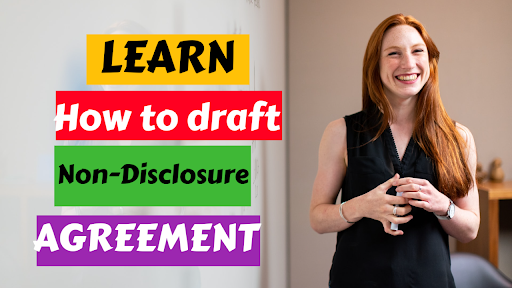Drafting a Non-Disclosure Agreement (NDA): A Comprehensive Guide
In a world driven by innovation and intellectual property, protecting your confidential information is of utmost importance. Whether you are a business owner, an entrepreneur, or an inventor, one effective way to safeguard your secrets is by drafting a Non-Disclosure Agreement (NDA). An NDA, also known as a confidentiality agreement, is a legal contract that defines the terms under which confidential information can be shared with others while prohibiting its disclosure to unauthorized parties.
Crafting a solid NDA can be a complex undertaking, but by following these essential steps, you can ensure that your confidential information remains secure:
1. Identify the Parties: Begin by clearly identifying the parties involved in the agreement. Specify their full legal names, addresses, and any relevant affiliations.
2. Define the Purpose: Clearly state the purpose of the NDA, explaining why the agreement is being established and what information is to be protected. Include a brief description of the confidential information that will be disclosed.
3. Determine the Term: Specify the duration for which the NDA will remain in effect. Typically, this period ranges from two to five years, depending on the nature of the information disclosed.
4. Identify Confidential Information: Define the scope of the confidential information that will be protected under the agreement. Be as precise and detailed as possible to avoid any ambiguity. Additionally, clearly distinguish between what constitutes confidential information and what does not.
5. Include Exclusions: Ensure that the NDA includes a section that lists the exclusions. This section outlines types of information that are not considered confidential or covered by the agreement. This may include information that is already publicly known or becomes known without any violation of the NDA.
6. Obligations and Restrictions: Specify the obligations and restrictions placed on the parties involved in the agreement. Describe the rights and responsibilities of the disclosing party (who shares the information) and the receiving party (who receives the information) regarding the confidential information. For instance, outline that the receiving party must use the confidential information only for the specified purpose and refrain from disclosing it to unauthorized individuals.
7. Outline Permitted Disclosures: Sometimes, certain disclosures may be necessary or required by law. In such cases, define the circumstances under which disclosure may be permitted, for example, if ordered by a court or regulatory body. Ensure that the party making the disclosure provides prior written notice to the other party.
8. Address Return or Destruction of Information: Specify whether the receiving party should return or destroy all copies of the confidential information upon termination or expiration of the agreement. Include a timeline for this action.
9. Include Non-Compete and Non-Solicitation Clauses (Optional): If desired, incorporate non-compete and non-solicitation clauses to prevent the receiving party from competing or soliciting employees or clients during or after the agreement.
10. Governing Law and Jurisdiction: Outline the governing law and the jurisdiction within which any litigation or disputes arising from the agreement would be resolved.
11. Seek Legal Advice: While it is possible to draft an NDA without legal assistance, it is advisable to consult a qualified attorney to ensure that your agreement is thorough, legally sound, and properly tailored to your specific needs.
12. Review and Revise: Before finalizing the NDA, review it meticulously, making sure all provisions are clear and unambiguous. Seek feedback from all parties involved to address any concerns or questions they may have.
13. Execution: Once all parties are satisfied, ensure that the NDA is properly executed, dated, and signed by all parties. Keep a copy of the agreement for your records.
Drafting a comprehensive Non-Disclosure Agreement is crucial in safeguarding your confidential information. By following these steps, you can create an effective document that protects your interests and preserves the confidentiality of your secrets. Remember, seeking professional legal advice is always a wise decision to ensure optimal protection of your confidential information.

Comments
Post a Comment